In This Article

In This Article
The Ultimate Guide to Rabbit Hunting
Rabbit hunting is one of the best ways for new hunters to get started in their hunting journey. While we all may want to go on a backcountry elk hunt in Montana, there are quite a few barriers to entry that make it difficult to jump right into that. However, small game hunting can offer the same excitement and sense of accomplishment and you could get started this week.
This is our ultimate guide to rabbit hunting. Whether you’re a seasoned veteran or don’t yet own a shotgun, this guide is for you. We’ll be covering everything from what gear you’ll need to rabbit habitat and hunting tactics. Let’s get into it!
North American rabbit species
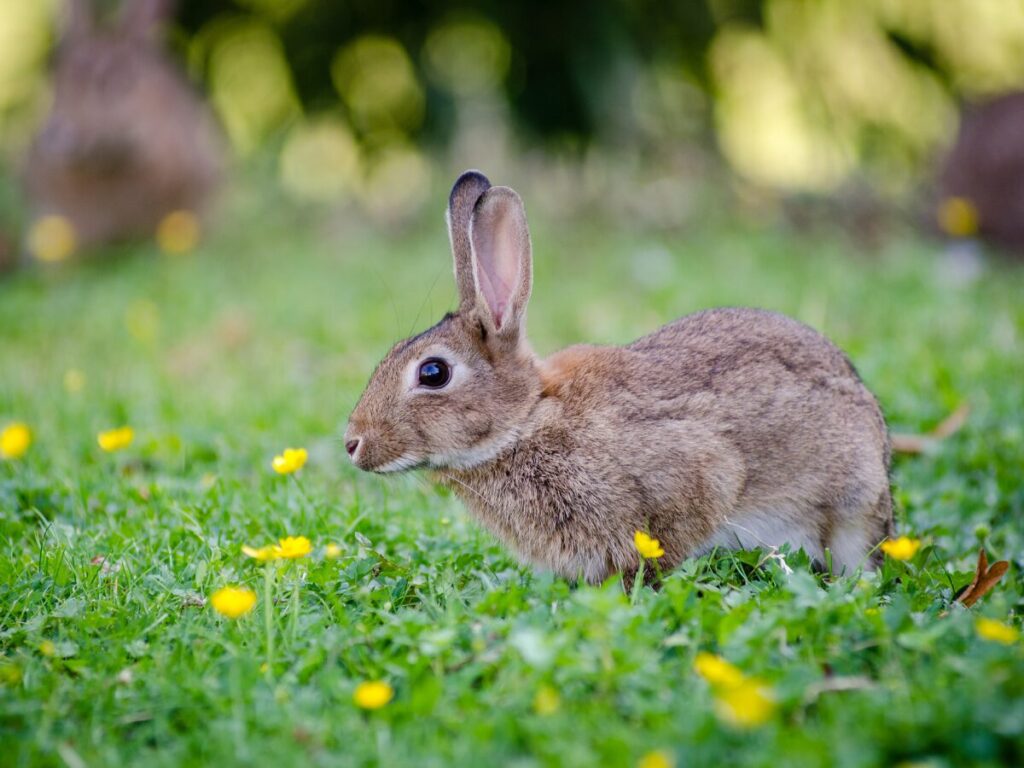
Before we jump into how to hunt rabbits, we need to learn more about the different species of rabbits, hares, and pikas that exist. Rabbits, hares, and pikas belong to the order Lagomorpha and there are fifteen species of rabbits, hares, and pikas in the United States. There are 109 different species worldwide. The fifteen different species here in the U.S. are listed below.
Different species of rabbit, hare, and pika in North America
Eastern Cottontail Rabbit
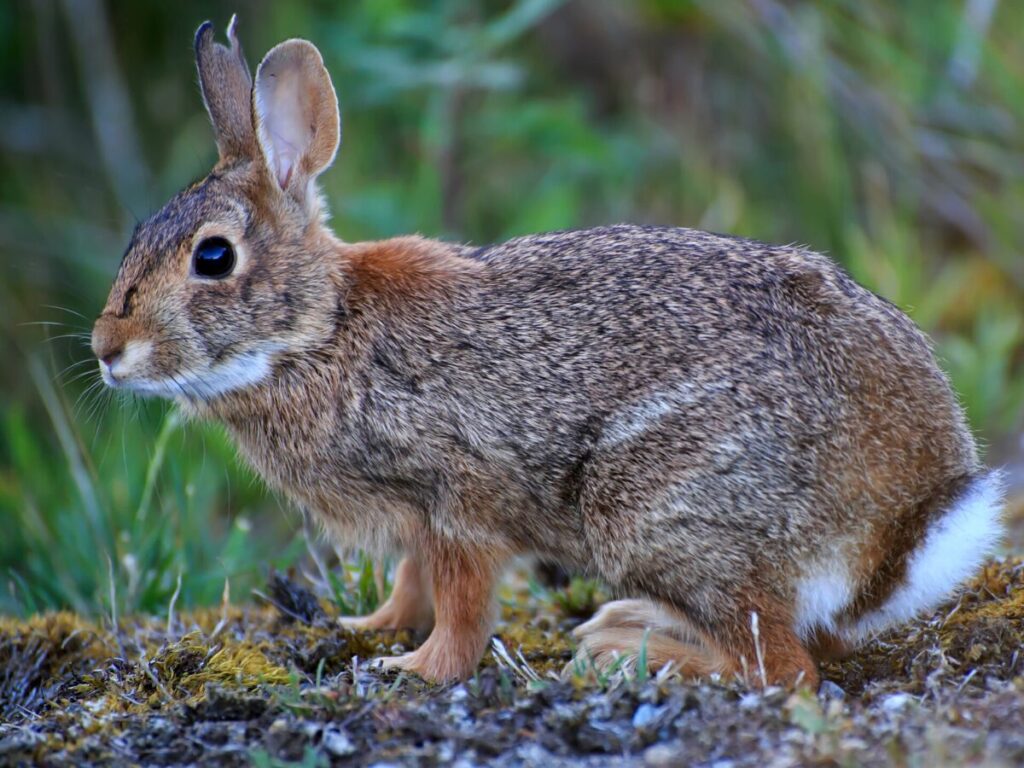
This is the most common rabbit in the U.S. Have bunnies in your yard? It’s likely eastern cottontail rabbits. These rabbits can be found in the eastern two-thirds of the United States.
Brush Rabbit
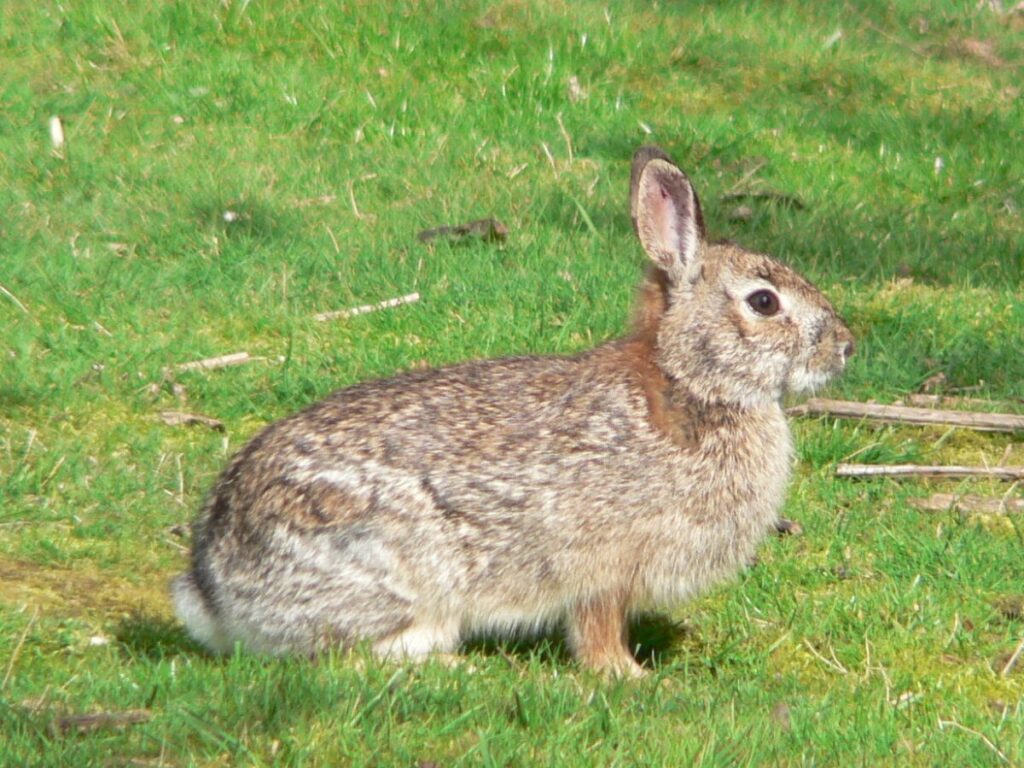
The brush rabbit can be found in the western part of the U.S. and is smaller than the eastern cottontail.
Desert Cottontail Rabbit
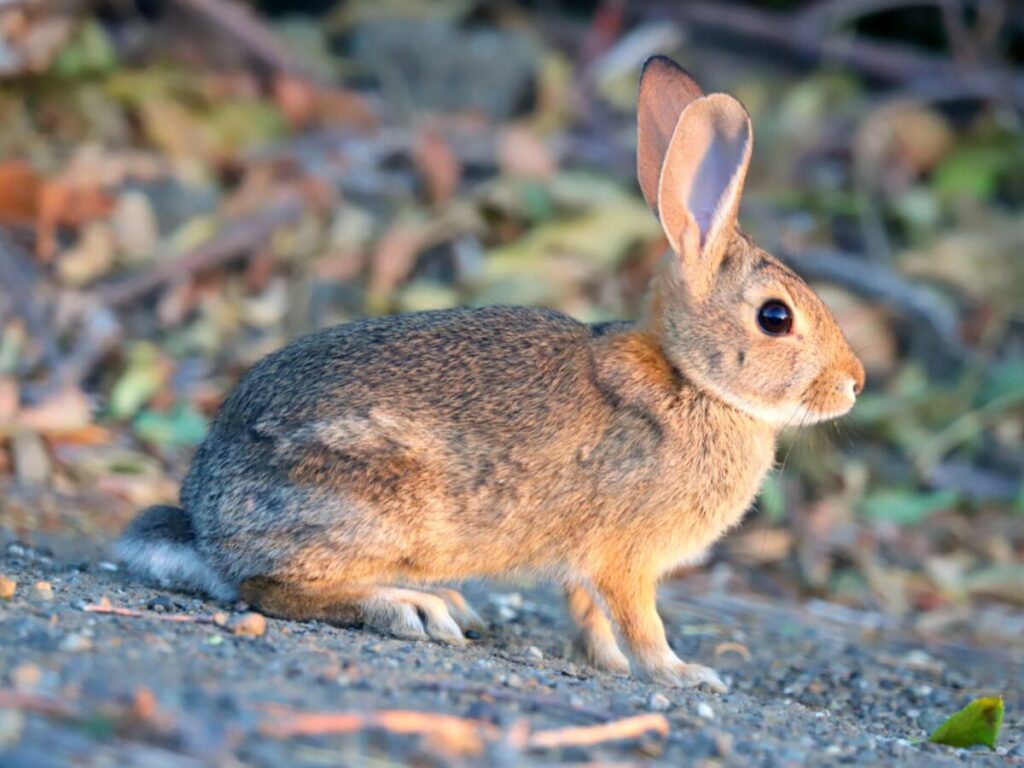
Desert cottontail rabbits inhabit the southwestern part of the United States and Mexico. While they live in the harsh environment of the desert, they are quite common in this region.
Swamp Rabbit
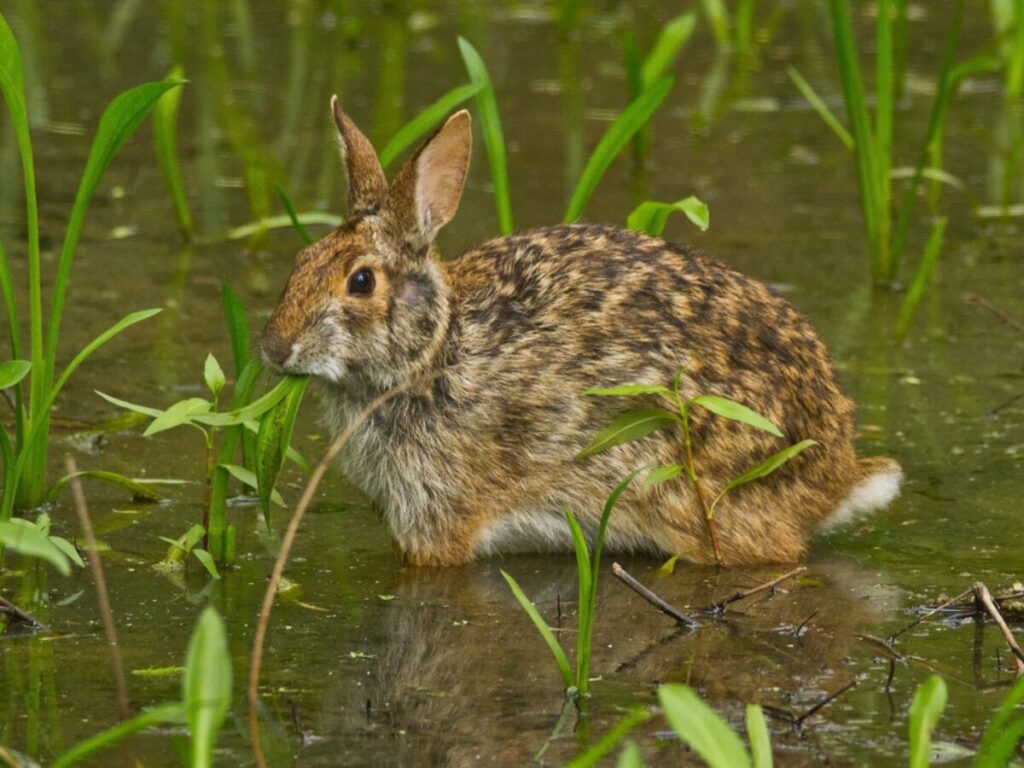
Swamp rabbits inhabit the southeastern part of the United States stretching from the Carolinas to Texas. While all rabbits have webbed feet and powerful hind legs, the swamp rabbit might use them the most of all the species as they navigate the wetlands of the southeast to avoid predators.
Marsh Rabbit
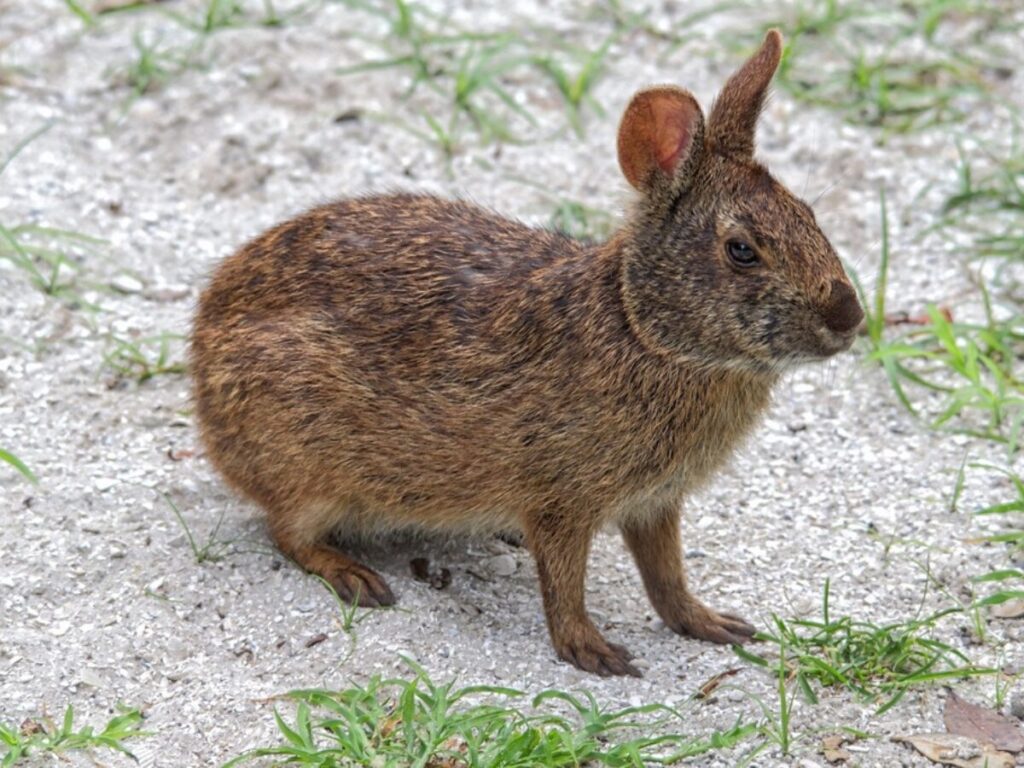
Similar to the swamp rabbit, the marsh rabbit is found in the southeastern part of the U.S. and is found only in wetland areas. Marsh rabbits are typically a bit smaller than swamp rabbits.
Appalachian Cottontail Rabbit
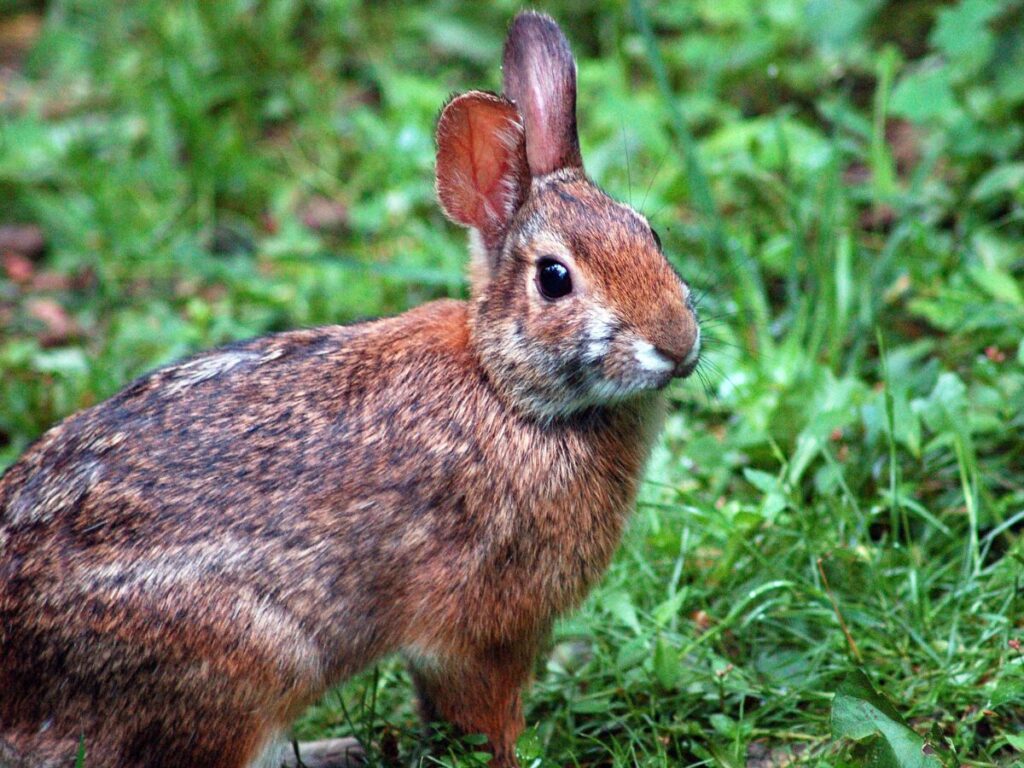
This is one of the more uncommon rabbit species. As you might have guessed, they inhabit the eastern part of the United States stretching the length of the Appalachian Mountains.
New England Cottontail Rabbit
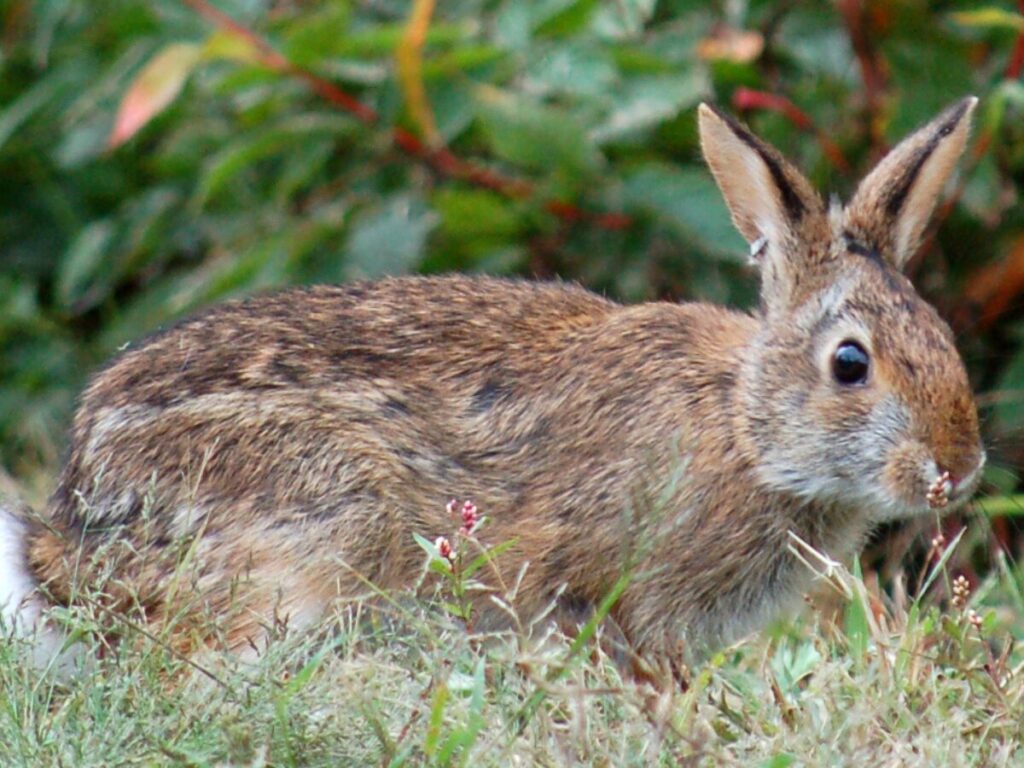
The New England cottontail can be easily confused with the common eastern cottontail. However, they are typically a little bit smaller and have smaller, less bushy tails.
Mountain Cottontail Rabbit (Nuttall's Rabbit)
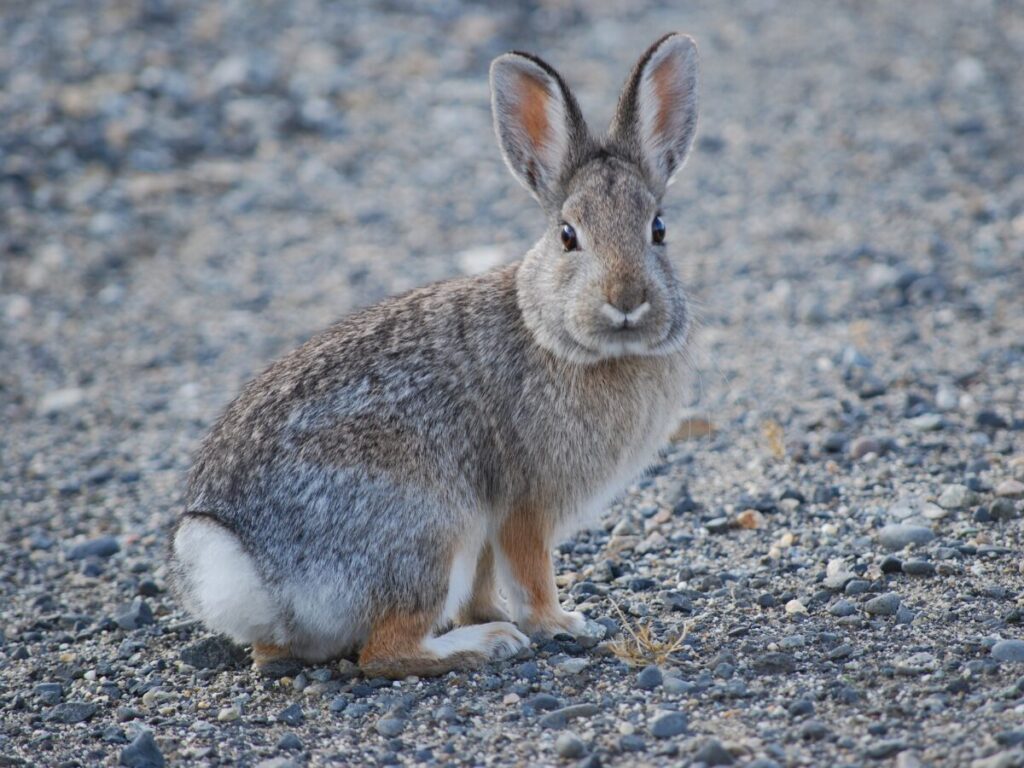
Native to most of the rocky mountain range, the mountain cottontail is one of the less common rabbit species in North America.
Pygmy Rabbit
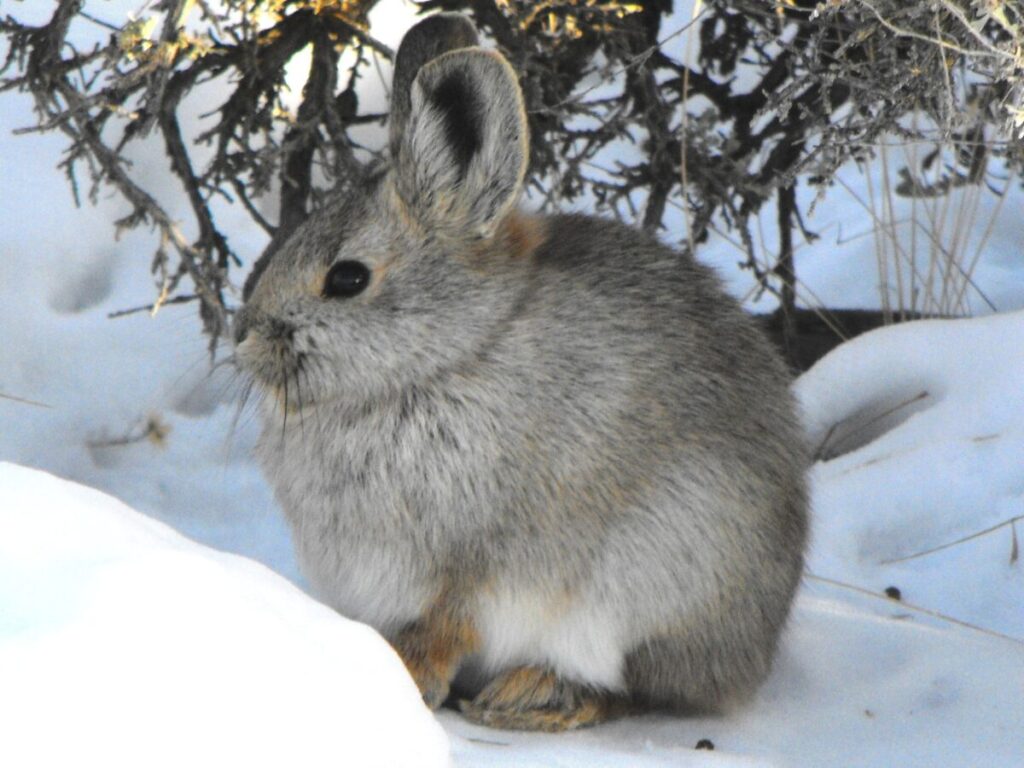
The Pygmy rabbit is the smallest in the world measuring only 9 to 11.5 inches long and weighing often less than a pound. They can be found in the western part of the United States and their populations have been declining in recent decades.
Black-tailed Jackrabbit

The black-tailed jackrabbit is the first hare on the list. Hares are much larger than rabbits. Black-tailed jackrabbits can weigh up to seven pounds. That’s almost twice the size of a large cottontail rabbit. These can be found in the western half of the U.S.
Snowshoe Hare
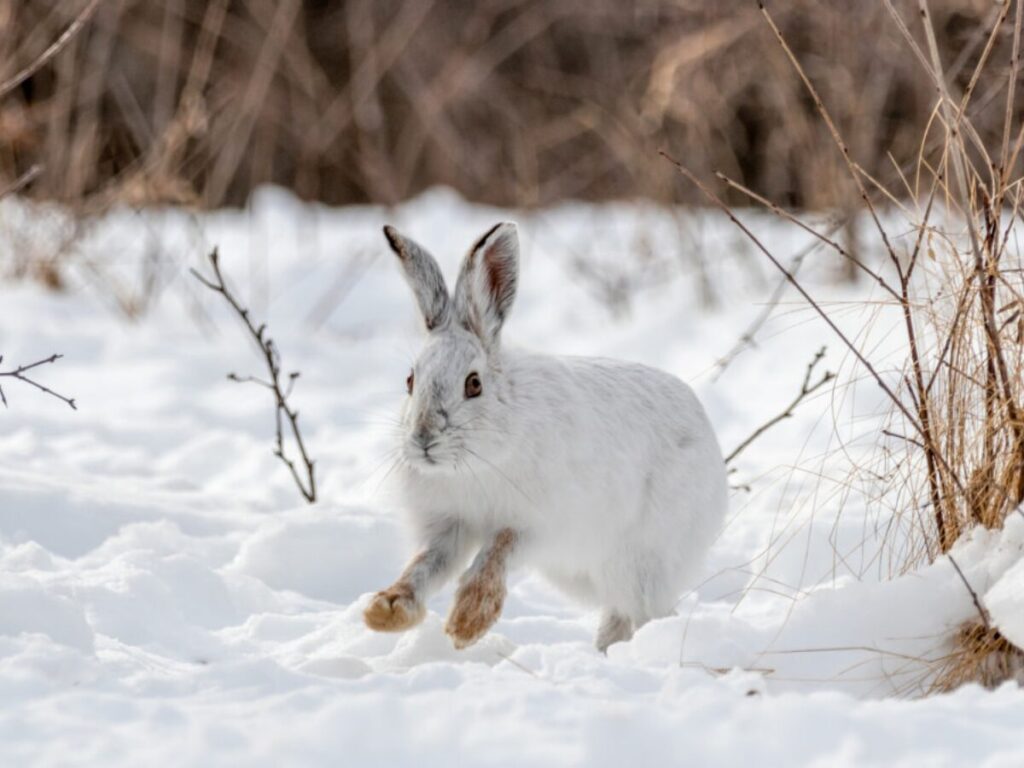
As you may have guessed, the snowshoe hare can be found in colder regions that allow them to blend in with snowy landscapes. They can be found in mountainous regions of Canada and the northeastern part of the U.S. Their coat of fur transitions from a brownish color in the summer months to white in the winter.
White-tailed Jackrabbit
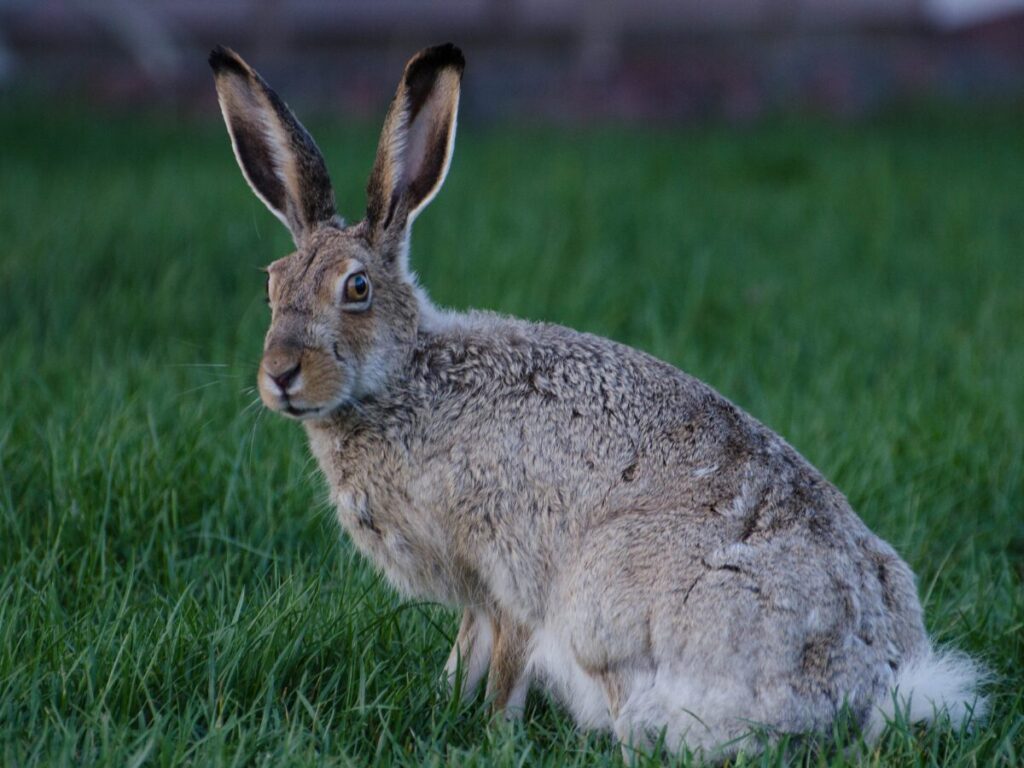
Found in the western part of the U.S. and parts of Canada, the white-tailed jackrabbit is one of the largest hares in North America. Like the snowshoe hare, white-tailed jackrabbits living in colder climates will turn snowy white in the winter months.
Antelope Jackrabbit
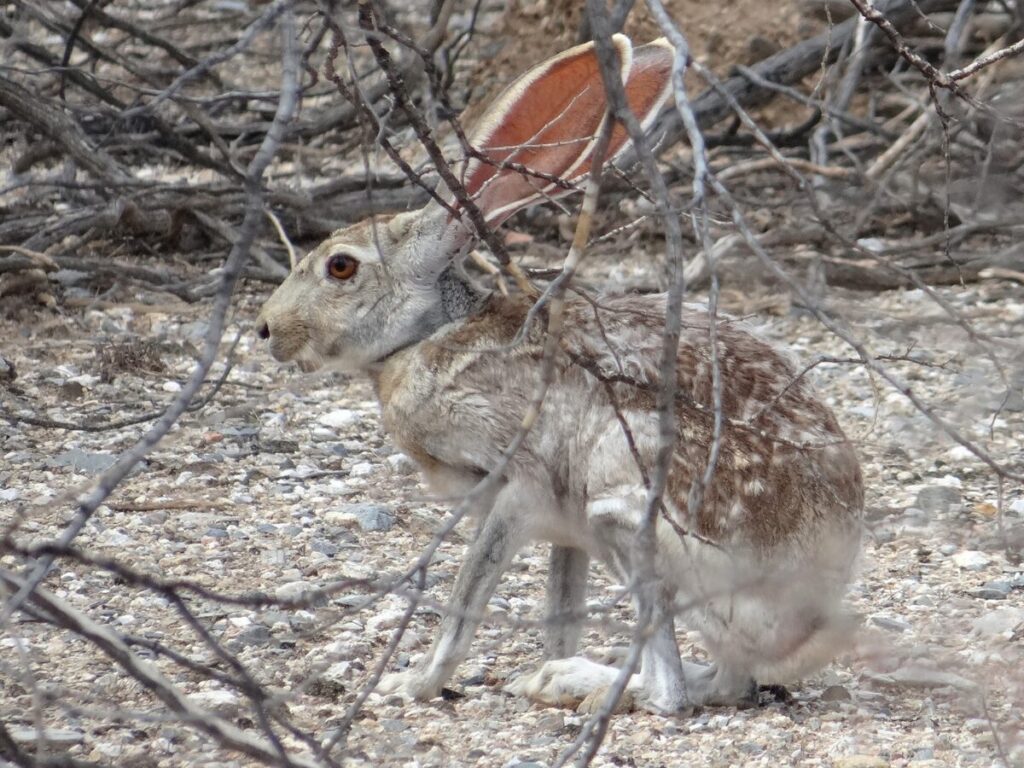
Native to the southwestern region of the U.S. and northern Mexico, the Antelope jackrabbit can run up to 40 mph to avoid predators.
American Pika
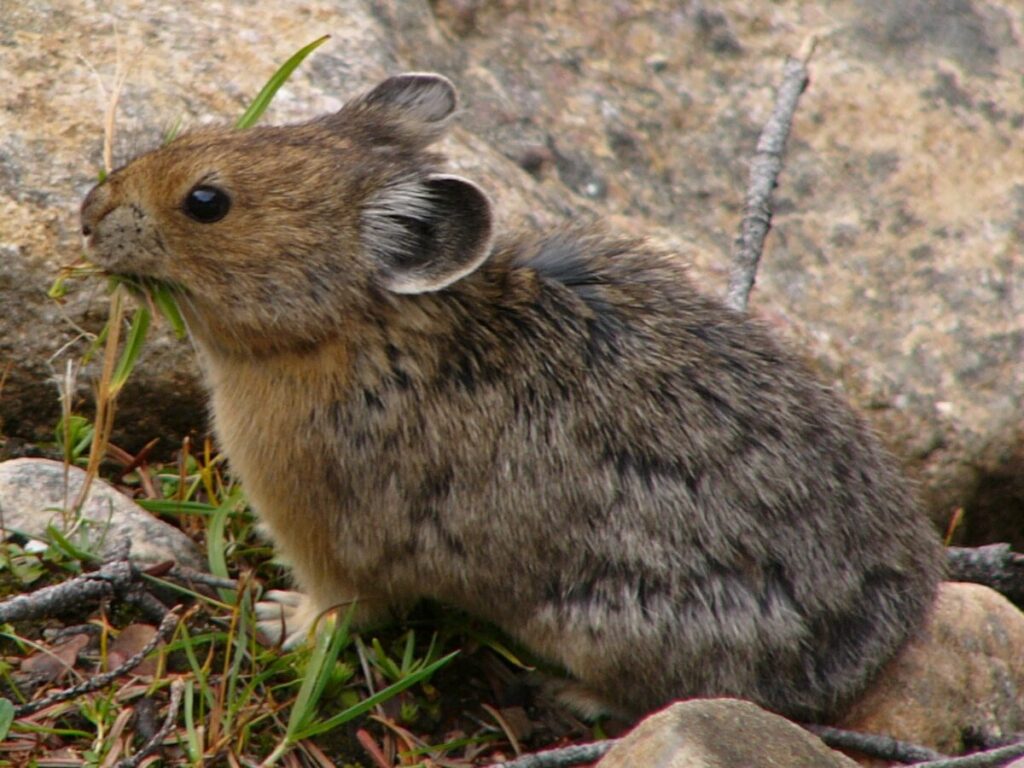
Pikas look significantly different from the hares and rabbits listed above. They are much smaller yet they are still a member of the order Lagomorpha. The American Pika can be found throughout the U.S.
Collared Pika
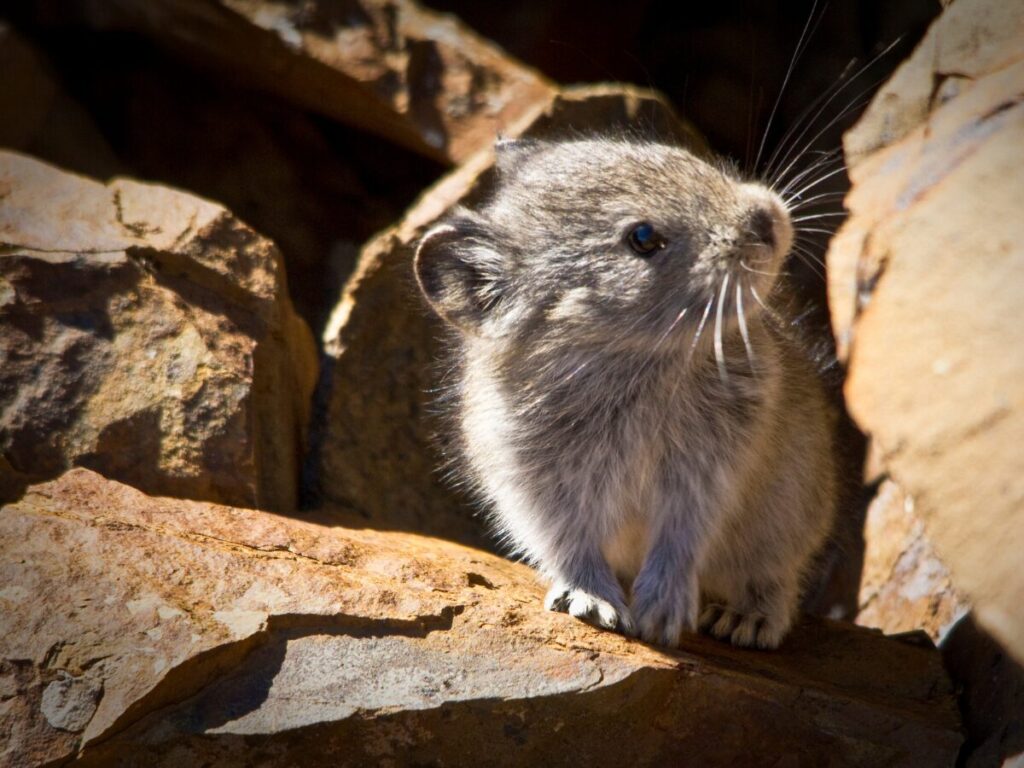
The collared pika can be found in regions of Alaska and parts of western Canada. Climate change has had a significant impact on their habitat making conservation efforts very important.
Which species can you hunt?
Of the fifteen species listed above, three are protected species that you cannot hunt. The Pygmy rabbit, American Pika, and Collared Pika cannot be hunted.
Pikas are considered an indicator species due to their high sensitivity to climate change. Pygmy rabbits are considered an endangered species as populations decline and habitat is lost.
With that being said, twelve of the fifteen species listed above can be hunted. With such a wide range, no matter where you’re hunting in the U.S. there are rabbits or hares for you to go after!
It’s important to always review your state’s hunting regulations to make sure you’re staying with the legal methods of pursuit, bag limits, and more. Check out our hunting season guide for more information on hunting regulations in every state.
Understanding rabbit behavior
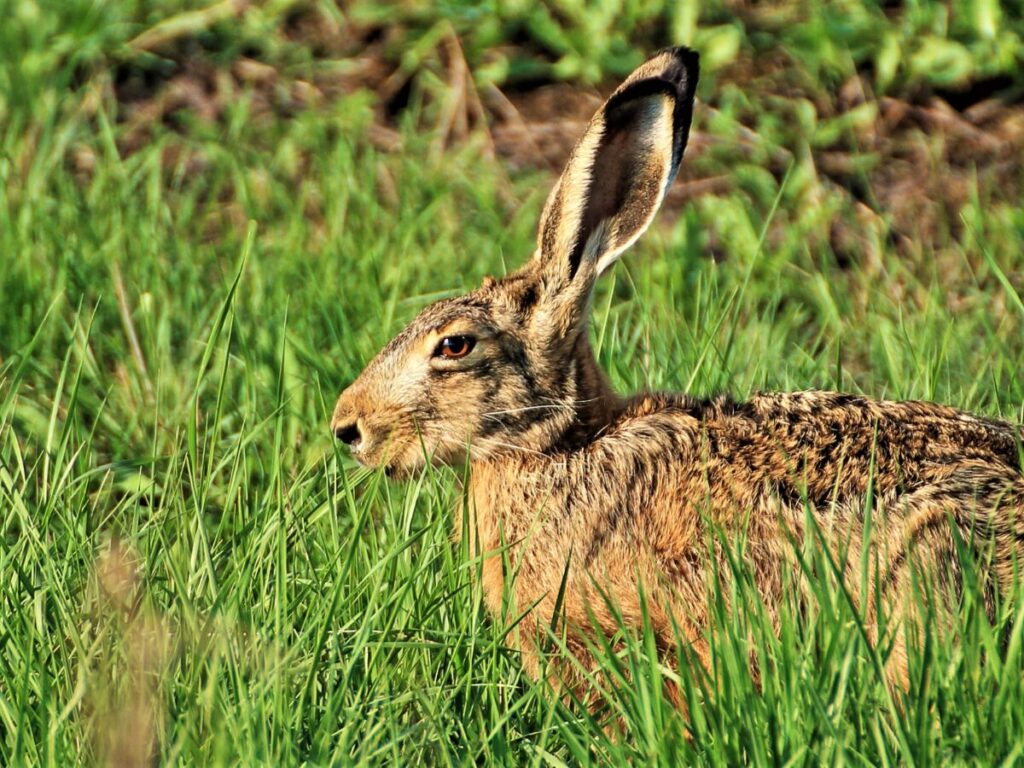
Rabbits are small creatures that have many predators. Whether they’re running from coyotes in the Midwest, hiding from hawks in the desert, or avoiding alligators in the Southeast, rabbits must rely on their senses to stay alive. Let’s learn a little bit more about their defensive tactics.
Rabbit habitat defensive tactics
Like many other prey animals, rabbits have very specific defensive tactics. Rabbits’ most powerful tactic is their ability to hide and blend in. When in doubt, a rabbit will head for thick shrubs or brush for cover. However, if they are met head-on with a predator, their first instinct is to freeze in hopes of blending in with their surroundings and trick the predator.
You’ve probably seen this where a rabbit will run really fast and then just freeze. Just like when hunting so many other species, when you’re scanning through binoculars or looking through the woods, you’re just looking for movement.
When looking for areas to hunt rabbits, you’ll want to identify areas with plenty of cover for them to avoid predators. This could be tall grasslands, thick woodland edges, or dense marshes around a wetland. If there’s no cover for them to run to, it’s unlikely you’ll find them hanging out there.
Best times and places to hunt
The basic rule of thumb for hunting most big or small game is that the best time to hunt is in the early morning or late afternoon. This is when much of the animal world is most active. It’s when whitetails are moving from feeding to bedding or vice versa.
However, this doesn’t only apply to whitetails. If you’ve been deer hunting, you may have noticed a pattern in that as soon as the sun rises to a certain point in the morning or sets to a certain point in the evening, the first mammals you typically hear moving about the woods are squirrels.
Small game animals like rabbits and squirrels, just like most big game animals are most active in these so-called “witching hours” in the morning and evening. It’s also important to review your state’s regulations on shooting light. Many states have a rule of 30 minutes before sunrise to 30 minutes after sunset is considered shooting hours.
Ok great, you know what time you need to be out looking for rabbits, but where exactly can you find them? This is going to mostly depend on your location. If you’re in the deserts of the southwestern part of the U.S. going after Antelope jackrabbits versus if you’re on the east coast going after eastern cottontails, where you find these creatures is going to vary.
However, there are some good rules of thumb you can follow to locate the rabbits in your area.
Think cover and food
Rabbits are often going back and forth from cover to food. So if you’re able to find food sources near thick cover, there’s a good chance there will be rabbits there.
Check around human structures
Rabbits are known to tolerate human activity so check around the old barn or run-down structures. You may spot them moving in between that structure and a food source.
Check sunny slopes
Rabbits can often be found on the move if it’s sunny after a cold front. Check south and southwest-facing slopes and see if you can spot any rabbits enjoying the warm sunshine.
So now you know when and where to go to find rabbits. Now what do you need to take with you?
Essential gear and equipment for rabbit hunting
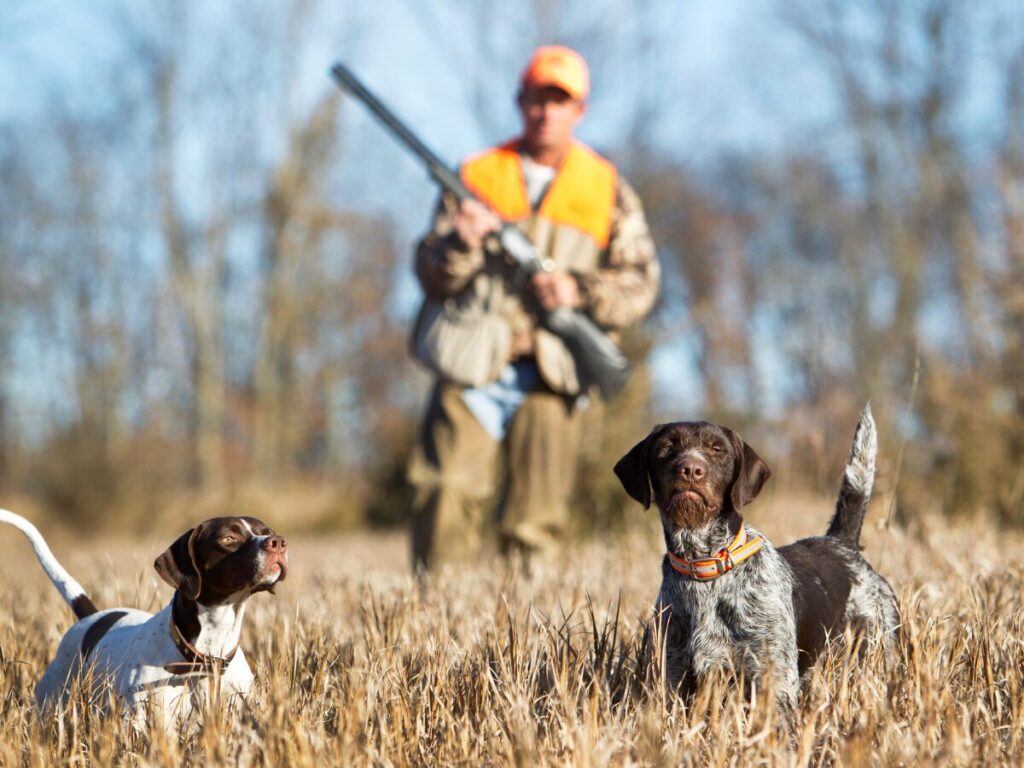
The gear you take with you rabbit hunting can make or break your hunt. It’s important to remember the essentials while also not wearing excessive amounts of clothing or carrying a 50-pound rucksack and wearing yourself out. In this section, we’ll cover our recommendations on the gear you should take and what you should leave at home.
Firearms and ammo
When it comes to firearms for rabbit hunting, there are essentially three camps. Shotguns, small caliber rifles, or pistols. Which camp you choose will change the tactics you use, the gear you need, and a variety of other factors. However, rabbit hunting is enjoyable no matter which firearm camp you’re in.
Shotguns
Shotguns are a classic and nostalgic choice for rabbit hunting. If you’re opting for a shotgun, you’re likely going to be flushing rabbits out of their thick cover and taking quick snapshots at them while they’re on the move.
This method of rabbit hunting calls for a shotgun that is easy to carry, fast-handling, and durable. Double-barreled shotguns give you the advantage of two rapid back-to-back shots, while pump actions may offer more shells before needing to reload.
When it comes to gauge and shot, a variety of combinations are effective. 12-gauge, 20-gauge and even 28-gauge shotguns are all effective with this style of rabbit hunting. Ideal shot loads would be No. 6, No. 5, or, No. 4.
However, if the quick action of flushing rabbits out of the brush isn’t your speed, you may want to opt for a small-caliber rifle.
Check out some of our favorite shotguns for rabbit hunting
Small caliber rifles
Small caliber rifles offer a bit of variety in terms of caliber. The go-to round for just about any small game hunting is the classic .22 LR. This is a great round for most small game including rabbits. It’s also a classic “first rifle” that many are given at a young age. With that being said, there are plenty of other caliber options that are just as if not more effective such as .17 HMR, .17 Hornet, and .22 Hornet.
When selecting a small-caliber rifle for rabbit hunting, it’s important to keep in mind that rabbits are small, so if you’re putting a high-velocity round down range at the vitals of an eastern cottontail, there may not be much meat left after the harvest. So it’s important to be mindful of the damage your round does and potentially opting for a headshot to allow for optimal meat harvest.
If you want to have some fun and make rabbit hunting even more challenging, you could opt for a pistol.
Check out some of our favorite rifles for rabbit hunting
Pistols
While most will choose a shotgun or small-caliber rifle, hunting rabbits with a pistol is very practical and can be a great challenge. There are plenty of accurate pistols chambered in .22 LR that are perfect for the quick shooting that is sometimes required for rabbit hunting.
While hunting rabbits with a pistol can be a lot of fun, if it’s your first time, we would recommend opting for a shotgun or small-caliber rifle first, and then moving to a pistol if that sounds exciting to you.
Check out some of our favorite pistols for rabbit hunting
Clothing and safety gear
Gearing up for your hunt can be very exciting. Choosing all the different pieces of gear you need to take with you, the new gear you need to purchase, and making sure everything is ready to go is all part of the excitement of hunting. With that being said, it’s important to remember, that all you need to hunt is a firearm and your senses.
There are a few other pieces of gear that we’d probably throw in there that are important like a knife and maybe a good pair of binoculars. But the point is that it’s very easy to take too much gear with you and that’s a sure way to end up back in the truck empty-handed and much sooner than you anticipated.
The gear you take with you will also vary based on your method of hunting. If you’re hunting with dogs, obviously you’ll need different gear than someone walking around the woods solo. Below are a few essential pieces of gear for any rabbit hunter.
A good pair of boots
This goes for any hunting you’re doing. A good pair of boots goes a long way. You’re going to be on your feet for a long time and it’s likely going to be over rough terrain. Something durable, waterproof, and most importantly, comfortable will be a lifesaver for you in the field.
A pair of gloves
Whether you’re cleaning game after the kill, or you’re climbing through thick brush, it’s never a bad idea to have a pair of gloves on you. You’ll never regret taking a pair with you, but you might regret not having them when you need them.
Post-harvest gear
While thinking about firearms and gear may be super exciting, it’s important to remember what you’ll need to finish the job after the harvest. Depending on your situation you may be cleaning your game back at the truck, the campsite, or the house. It’s important to assess your situation and to be sure you have everything you need. That often includes a good, sharp knife, game bags, and a cooler to keep your meat fresh until you can get it into a freezer.
Eye and ear protection
The most powerful hunting tools we have are our senses. You have to be able to see, hear, smell, and feel to be a good hunter. That’s why ear and eye protection is something we strongly recommend. Overexposure to firearms without ear protection can damage your ears and it’s not worth the risk of getting something in your eye and ending your hunt early.
Food and drink
We don’t recommend taking a fine bottle of wine and a five-course meal with you into the field, however, having some water and a nice snack like trail mix or summer sausage can work wonders for extending your hunt when it starts to feel like it’s time to head in for lunch.
Hot tip
When choosing a snack, keep in mind that rabbits do have a very strong sense of smell. It’s estimated they have about 100 million receptor sites. In comparison, it’s estimated that whitetail deer have about 300 million receptor sites while humans have about five million. Rabbits aren’t known to spook to human scents like deer do, but it’s always something to consider.
Spare rounds
You never want to run out of ammo. You probably don’t need to bring 100 rounds with you, but know your bag limits and bring more ammo than that. You won’t regret bringing a few spare rounds with you, but you sure will be disappointed if you have to hike back to the truck just to reload.
Small game vest or pack
Small game vests are fantastic as they are specifically designed for small game hunting. They offer pockets specifically sized for calls, dead game, shotgun shells, and a variety of other pieces of gear you may need. If you are serious about small game hunting, having a vest that makes your life much easier is a good option. With all that being said, we have found that a decent-sized fanny pack or sling bag can do the trick as well.
Additional tools
There’s a variety of gear that you may or may not need based on your specific hunting situation. A few pieces of gear that can be helpful in the field are briar-proof chaps for walking through thick, thorny brush.
Fluorescent orange vests, shirts, or hats depending on your state’s rules. And lastly, be sure to obtain the right licenses and tags so you are hunting within the legal parameters of your state.
Rabbit hunting techniques

Just like most hunting in North America, there are a variety of different ways to pursue rabbits. Your approach will likely change depending on if you’re hunting by yourself, with friends, or with dogs. Let’s discuss some different methods and keys to having a successful rabbit hunt.
Solo hunting vs hunting with dogs
Using dogs to hunt rabbits offers some significant advantages if you have trained dogs to assist in your harvesting of rabbits. Some of the most popular dog breeds for rabbit hunting are beagles, mini beagles, basset hounds, dachshunds, Jack Russell Terriers, and Redbone Coonhounds.
Because rabbits will stick to their home range even if there is a dog in the area, it makes using dogs to flush the rabbits out is a very effective strategy. One of the most important things to remember when hunting with dogs is to be patient. Let your dogs survey the area and don’t rush them through any brush they want to take their time with.
When it comes to hunting rabbits solo, you’ll want to change up your tactics quite a bit. This is when you’ll want some briar-proof chaps or some other kind of thick pants as you will need to be the one flushing the rabbits out of the thick brush to get a shot at them.
Stalking and Approaching
When it comes to stalking and approaching rabbits, It’s recommended that as you work your way through the thick cover, walking in a zigzag motion will help you to flush them out more so than if you walk in a straight line.
Another good tactic is to take a sudden pause every so often. This sudden pause changes how you sound to the rabbits in hiding and can assist in getting them to make a run for it.
Whether you’re hunting with dogs or solo, one of the most important tips is you have the ability to shoot quickly. When a rabbit kicks out of hiding and is on the run, you have to be ready to take your shot or you’ll miss your opportunity. So always be ready!
Effective shot placement for rabbit hunting
No matter what firearm you are using when rabbit hunting, it’s generally recommended to opt for a headshot. If you’re used to big game hunting like whitetail deer or elk, it may seem strange to go for a headshot as opposed to going for the vitals as you do with those larger animals.
However, with most rodent-like small game, a headshot helps to preserve as much meat as possible and due to their small size, if you’re hunting with a shotgun and you aim for their head, you may also catch some of the vital organs.
Weather and seasonal considerations

Just like with hunting any species, the weather can make or break your hunt. These animals don’t get to sleep in a nice heated room with pillows and blankets. They live outside every day, all day. So their lives are very much controlled by the weather. Let’s see how the weather impacts the movement of rabbits.
Impact of weather on rabbit activity
Rabbit activity is very similar to whitetails when it comes to reacting to weather. Heading out on your rabbit hunt before a storm rolls in is a good tactic to see lots of rabbit activity as they search for food and shelter before the storm.
Overcast skies and a light drizzle is the ideal weather for hunting rabbits. However, if there is too much rain or too strong of winds, they will find thick cover and stay there until the storm passes. Much like humans, rabbits don’t like to be cold and wet.
Seasonal tips
Depending on when you can hunt rabbits in your state, there may be some varying tips and tricks to seeing the most rabbit activity. Most states have a rabbit hunting season that spans from early fall or late summer to mid-winter or early spring. While some states such as Montana allow rabbit hunting all year long.
Hunting rabbits during that early fall time versus the mid-winter will require a difference in clothing. If there is snow you may want to opt for white clothing and potentially more layers than you would in early fall depending on temperatures.
Also, with less access to their favorite food sources in the winter months, you may be able to increase your chances of getting a shot at a rabbit or two by locating these scarce food sources that are still around.
Ethical and sustainable rabbit hunting practices
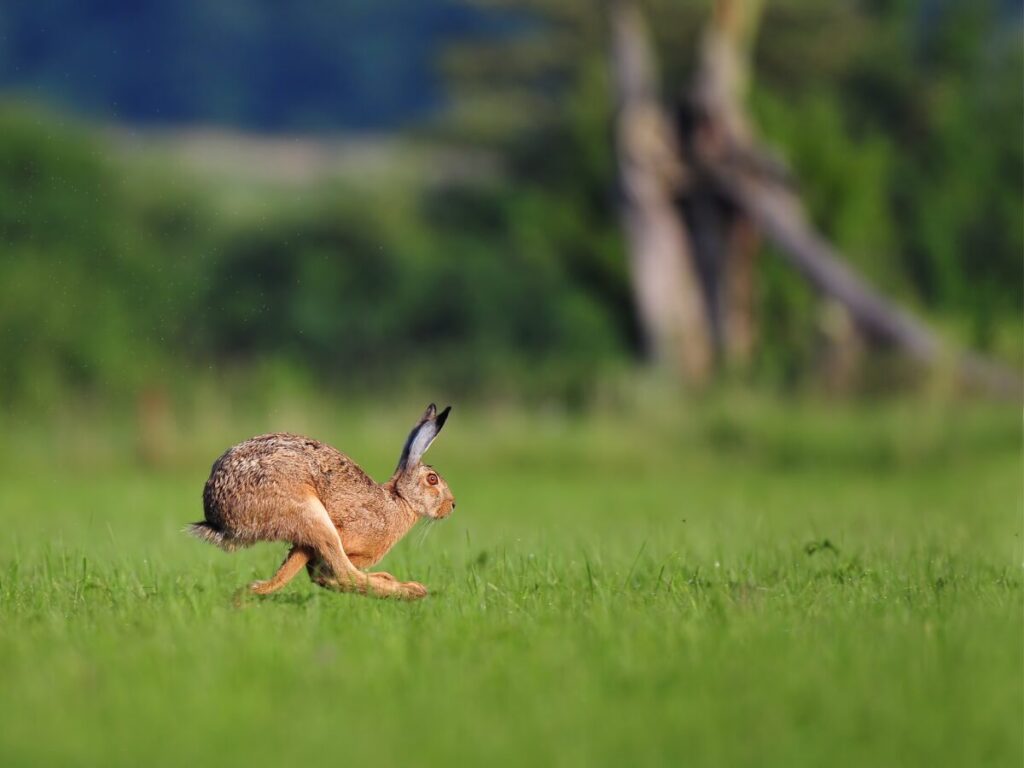
Adhering to regulations
Making sure you’re staying within the legal regulations of your state should be your first priority before, during, and after your hunt. Ignorance of the rules is not an excuse. You can review hunting regulations for every species in every state using our hunting season guide.
Sustainable practices
Here at Peak to Creek Outdoors we also believe in sustainable hunting practices. Don’t leave trash in your hunting area. As hunters, we want to preserve the habitats that allow these beautiful animals to thrive.
Without a strong habitat, we wouldn’t be able to come back year after year and bring future generations to the same places and have successful hunts. Respect the outdoors and follow leave-no-trace principles.
Post-hunt: dressing and cooking rabbit
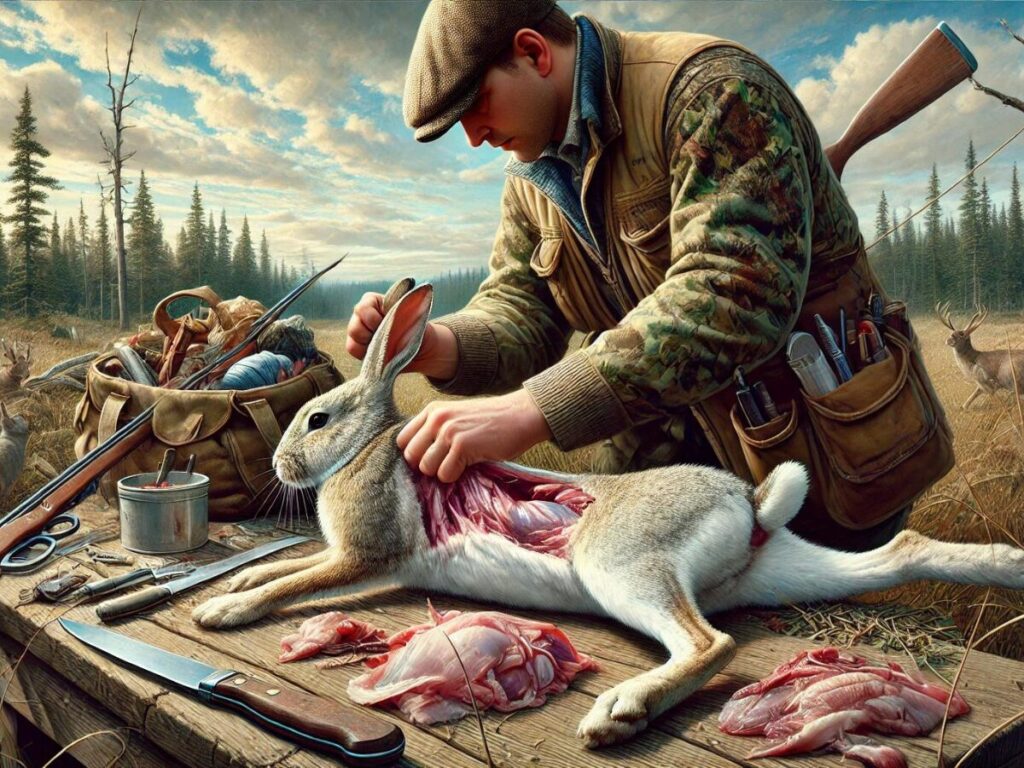
Congratulations, you had a successful hunt and bagged some rabbits! Now you get to enjoy your harvest. But the work is nowhere near done. Knowing how to properly clean and cook your game is an art form within itself. Let’s learn how to properly clean and cook rabbit.
Field dressing tips
There are a variety of techniques for cleaning and skinning rabbits. They are one of the easiest mammals to skin and clean as they are small and have fairly loose fur.
Common practice is to start by removing the head of the rabbit and hang it upside down to drain. Rabbit hunters may debate on whether you need to drain a rabbit as there isn’t much blood to begin with.
Next, you’ll want to dress the rabbit. Meaning, remove the fur and skin. The sooner you do this to the kill, the easier it will be, as dressing a warm rabbit is much easier than dressing a cold, stiff one.
Since the weather will likely be cooler when you’re hunting, spoilage of meat shouldn’t be too much of an issue. Due to the rabbit’s small size and loose skin, the dressing process should take no more than a few minutes.
To begin skinning the rabbit you’ll want to remove the feet first. There’s no meat in the feet and it’s easy to remove and keep for good luck! The easiest way to skin the rabbit is to cut across the back of the rabbit, perpendicular to the backbone.
Because of the rabbit’s loose skin, you can then take the two sides of fur that you now have and simply pull them apart in opposite directions (toward the feet and head).
You should then be left with the meaty part of the rabbit with the fur removed. You will then want to remove the vital organs. You can do this by carefully making a small incision into the belly of the rabbit and pulling out the organs. Some enjoy eating organs such as the heart and liver, but that’s up to you.
You’ll then want to clean up your now cleaned and dressed rabbit and separate it into separate pieces of meat or keep it whole for a whole rabbit roast. It’s common to remove the front and back legs, and depending on the size of the rabbit, you can also separate the belly meat from the loins.
Cooking and recipes
There are a variety of great rabbit recipes out there. Whether you’re doing a whole rabbit roast, a rabbit stew, or you want to deep fry it, you really can’t go wrong.
Many people describe rabbits as having a pleasant taste that is quite mild. While we’re not gourmet chefs check out some of these rabbit recipes and give them a try next time you harvest some rabbits using the tips from this article.
From our experience
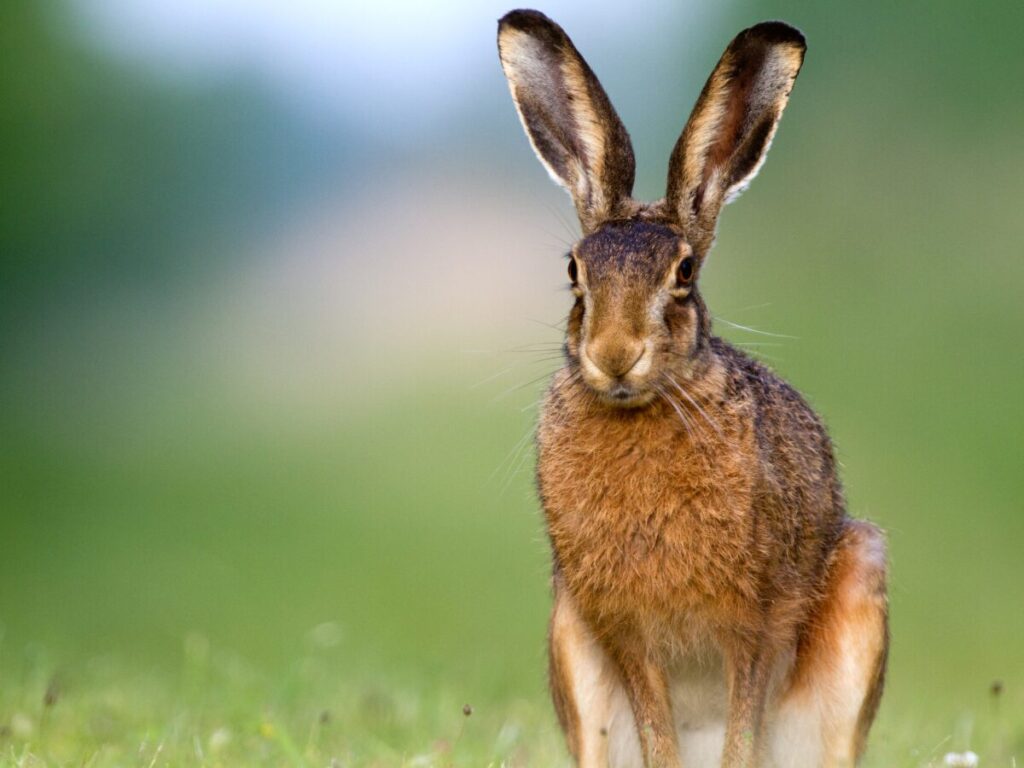
From our experience, rabbit hunting is a great way to introduce new hunters to the entire process of hunting. From gearing up to learning patience in the field to handling the pressure of the shot, to learning how to properly clean and eat game. It’s a great way to introduce anyone to the world of hunting.
So there you have it, the ultimate guide to rabbit hunting. Do you think we missed something? Let us know here. We want to hear from the community so that we can all become better, more educated hunters.



